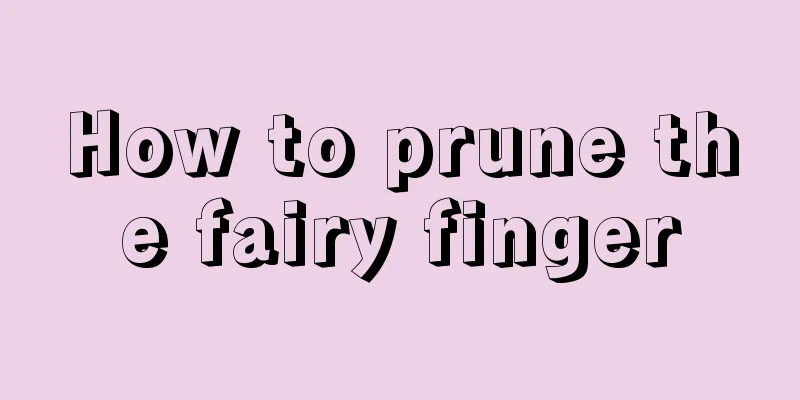How to prune the fairy finger

Pruning before floweringPruning before flowering is to ensure that the flower buds grow on strong nodes. In mid-to-late September, the nodes extending from the current year's single leaf can be pruned, and the deformed, twisted, weak and tender nodes can be removed to promote the differentiation of flower buds at the top of the nodes. Buds begin to appear in early October, and the flower buds are milky white to light red papillary. At this time, the newly grown flat stems should be removed in time to promote the birth of flower buds. After the flower buds are born, they should be thinned out according to the nutritional conditions. Generally, one flower bud is retained on one node. For two or more flower buds that are born successively at the end of the stem, the larger one should be kept and the smaller one should be discarded to concentrate the nutrients and avoid falling buds and flowers. If the plant grows vigorously but has few flower buds, it is not necessary to thin out the buds, but the young and tender stem nodes need to be removed. Pruning after floweringPruning after flowering is to shape the plant and promote branching. There is a dormant period in mid-March, during which pruning and shaping can be carried out in conjunction with repotting and changing the soil. Usually pruning is done in layers, with the bottommost nodes allowed to be slightly longer, followed by the middle ones, and the top ones cut short. Stems that have not been pruned for many years and have single nodes that are too long should be pruned. After pruning, they can grow two or more nodes and the plant will be fuller. For plants with too dense nodes or too vigorous growth, thinning and shaping should be combined with cutting off some large inner branches to allow ventilation and light to pass through. This can reduce the burden on the rootstock, delay plant aging, and reduce flower and bud drop. How to operateWhen cutting off the nodes, you should not cut from the middle of the node, but from the base of the node. At the same time, you need to retain a 1 to 2 mm long stalk to prevent damage to the growing point. The stalk will shrink and fall off soon after being cut, and no pruning marks will be left after the new stem nodes emerge. If you persist in pruning every year, the nodes will be distributed in a fan shape, and the plant will become fuller and fuller. |
>>: How to propagate the fairy finger by grafting
Recommend
How much is the yield per mu of white mulberry?
Yield per mu of white mulberry planted White mulb...
Why do the leaves of the green radish wilt after repotting? What should I do?
1. Proper watering The leaves of the green radish...
How to Make Potted Ivy Grow Out of the Pot
1. Change pots and soil in time When changing the...
What flowers are suitable for planting in the south in summer? Flowers suitable for planting in the south
What flowers are suitable for planting in the sou...
How to eat wax apple? Can the core of wax apple be eaten?
1. How to eat 1. Wash the wax apple thoroughly be...
The best and most comprehensive method for preparing culture soil! A must-have for flower lovers!
1. Preparation materials Garden Soil The soil tak...
Can pure coconut coir be used to grow succulents?
Can pure coconut bran be used to grow succulents?...
What to do if the leaves of Christmas cactus wilt
1. Watering in time Christmas cactus is not suita...
Kiwifruit planting requirements for soil (what soil is suitable for kiwifruit planting)
Kiwifruit growth habits Kiwifruit can generally b...
The value and use of coral vine
Indoor ornamental uses of coral vine The flowers ...
Mint Planting Methods and Tips
Mint , also known as silver dan grass and night-s...
What to do if Clivia is pinched by an arrow
1. Increase fertilization Reason: Too little nutr...
Pest and disease control of Murraya paniculata
1. Powdery mildew This disease mainly harms its l...
How to grow African violets? What are the precautions?
1. How to cultivate African violets 1. Light: Afr...
Why do flowers bought from the flower market die within a few days? (Why potted plants bought from the flower shop die at home)
Analysis of the reasons why potted plants bought ...









